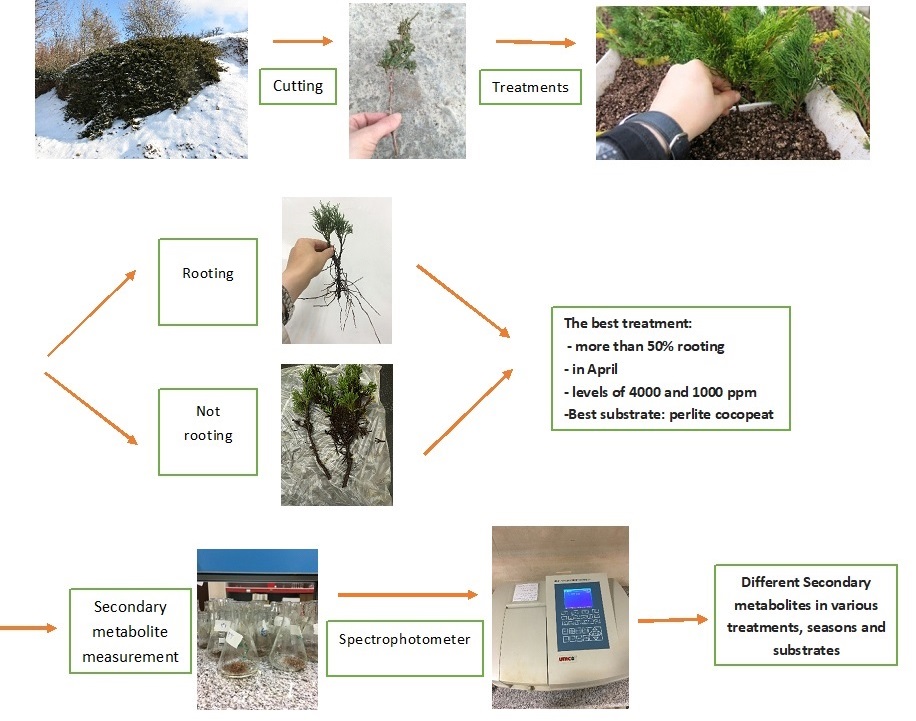Secondary metabolite changes in Maymars juniper cuttings (Juniperus sabina) under different treatments of propagation (IBA, substrate and harvest time of cutting)

Published 2022-05-05
Keywords
- Antioxidant,
- flavonoid,
- IBA,
- phenol,
- rooting
How to Cite
Abstract
The Endemic Juniper of Maymars (Juniperus sabina) is one of the most valuable plants in forested areas. The objectives of this experiment were: I) to determine the best conditions for stem cutting propagation of this species, and II) to examine changes in some of the secondary metabolites during the four months (the first of each season): January, April, July, and October, after rooting of cuttings. The research was done with the treatment of five levels of Indole Butyric Acid, including: 0, 1000, 2000, 4000, and 8000 ppm in four rooting substrates, including perlite, perlite-cocopeat (1:1), pumice, and a mixed rooting substrate (sand, perlite, cocopeat, vermicompost, and potash; 1:1:1:1:1) in the four seasons of the year, with stem cuttings having an average length of 15 cm. The best treatment with more than 50% rooting was seen in April at levels of 4000 and 1000 ppm, and the best substrate was perlite cocopeat. Using lower levels of IBA led to a reduction in total phenol content in the cuttings during the rooting period. The flavonoid content of the cuttings varied across different seasons. Based on these results, we recommend this way of propagation for Juniperus sabina production. This propagation method takes less time in comparison with sexual propagation from seed.





